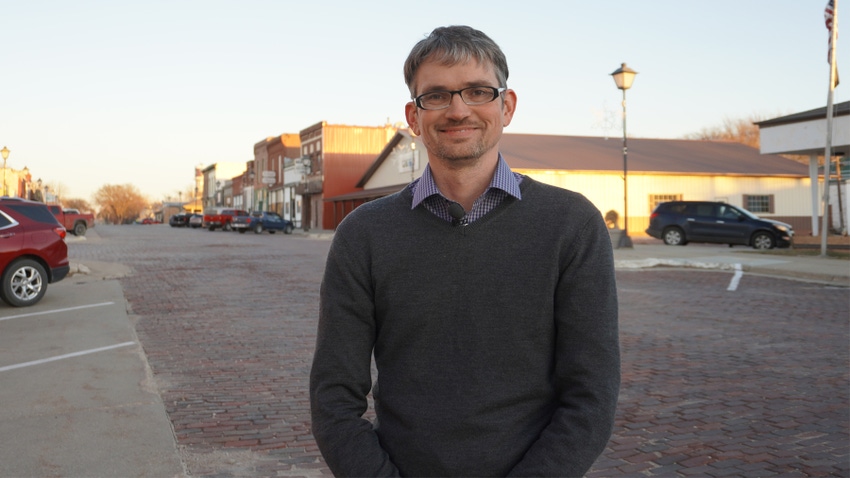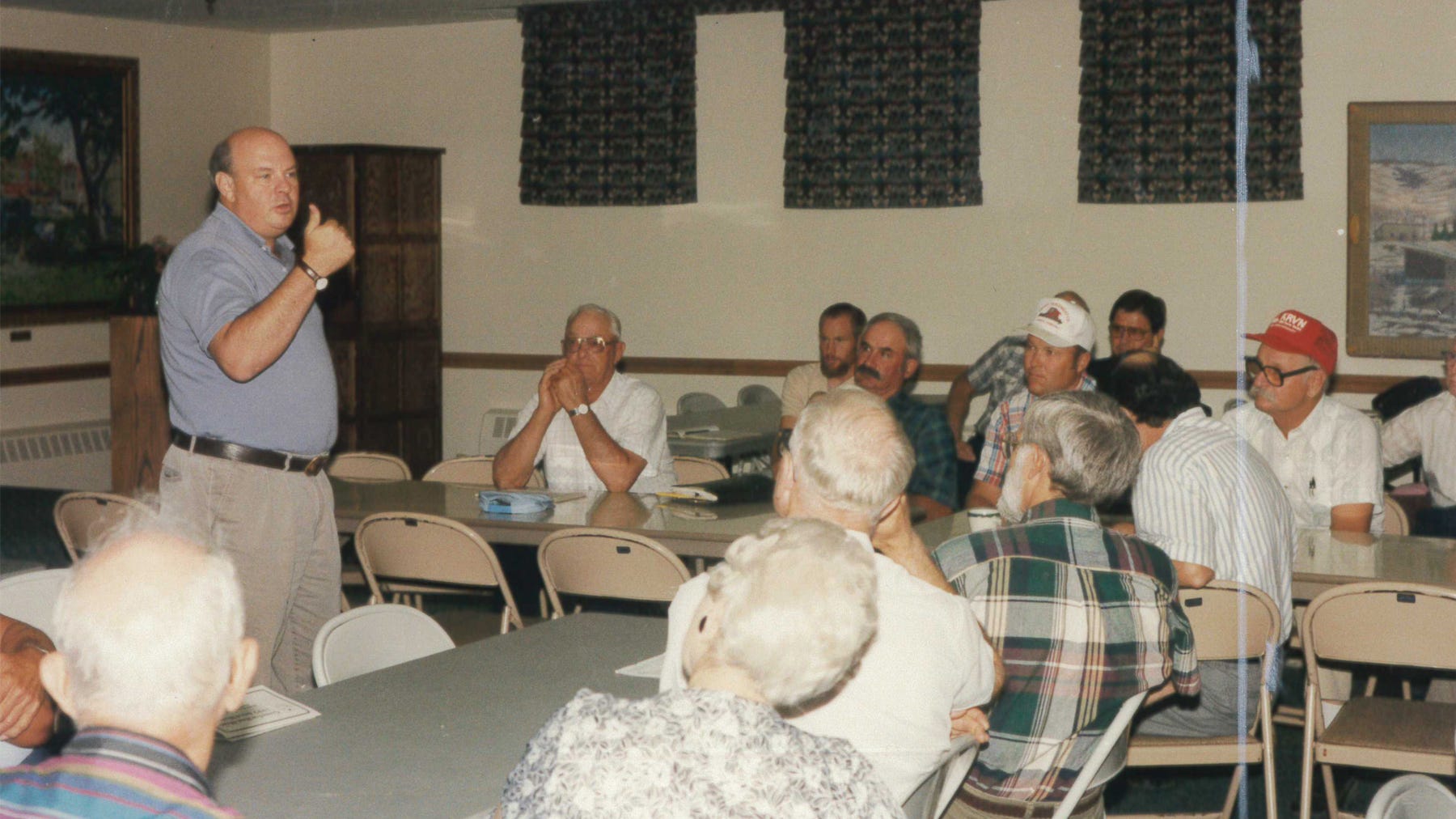
It started out as an agency that existed because rural residents saw an important need that wasn’t being addressed anywhere else. That was the humble beginning of the Center for Rural Affairs, based in Lyons, Neb.
Much of the early work of the agency was with small family farmers on production issues and alternative energy and production systems. One might say CFRA was working on regenerative agriculture long before it became the buzzword it is today. But policy favoring rural regions of the country and local residents, farmers, and small towns also was a large portion of their work.
CFRA was founded in 1973, originally based in Walthill, Neb. Don Ralston and Marty Strange were employed by the Goldenrod Hills Community Action Agency, a federally funded nonprofit organization based in Nebraska, which worked to eliminate poverty in five northeast Nebraska counties. Ralston was deputy director, and Strange was a planner.

STANDING UP: Marty Strange (standing), one of the Center for Rural Affairs founders, speaks to a group of farmers at a meeting in the early 1990s.
Involving local farmers and rural residents, Goldenrod Hills started an agricultural redevelopment program that would look at alternative crop production and food systems. But just as these programs were being launched, federal funding was eliminated, and Goldenrod Hills was to be shut down.
That’s when the local board stepped in, looking for a way to survive without federal support. Art May, a community developer from Macy; Allen Heine, a farmer and feeder from St. Helena; and Howard Swanson, a farm equipment dealer from Decatur, incorporated CFRA — a new entity separate from Goldenrod Hills — with a primary goal of advocating and developing strategies to address difficult economic issues facing farmers and rural communities.
Agent of change
“What’s interesting, and one of the reasons CFRA remains so vibrant today,” executive director Brian Depew says, “is that it has been baked into our DNA to always be an evolving, pragmatic change organization.”
With a main office in Lyons, Neb., and satellite office in Hartington in Cedar County, CFRA continues to work on the federal level and state level — particularly in Nebraska — South Dakota and Iowa and locally on behalf of farmers and ranchers and small towns.
When asked about a couple of the biggest “wins” over the years from a policy standpoint, Depew points to the establishment of the Conservation Security Program authorized in the 2002 Farm Bill, which evolved into the Conservation Stewardship Program (CSP) in the 2008 Farm Bill and has been reauthorized in each farm bill since.
Instrumental in CSP
The groundwork was laid for these with federal farm conservation policy in the 1980s. With the CSP program in particular, CFRA was instrumental, along with other organizations, in winning that fiscal commitment to this conservation program.
“In that particular program, it proves that working lands can be in a conservation program,” Depew says. “This follows the mission and vision of CFRA. We can have working lands, people on the land engaged in agriculture and do it in ways that steward our natural resources.”
Through the continued reauthorization of CSP in subsequent farm bills, federal farm policy will be aligned with those goals and that vision, he adds. “With the new farm bill coming up, we continue to bring forward changes to CSP to increase its breadth and depth,” he says.
Rural Microentrepreneur Assistance Program
Another national win for CFRA was the funding of the Rural Microentrepreneur Assistance Program, providing technical assistance and loans up to $50,000 to rural microenterprises.
“The backbone of small-town economies are Main Street businesses. So, when CFRA initiated advocacy for this program through USDA, we won it in the 2008 Farm Bill, and it has been renewed ever since,” Depew says. “It provides funding both for technical assistance and loan funds for non-farm rural small businesses. More than 45 states have benefited from this program. Funding wise, it is a small program at $6 million to $8 million per year, but it touches a lot of states and communities.”
New challenges
There are always new challenges on the horizon, Depew says.
“We are focused on small farm advocacy and profitability and conservation,” he says. “Our founders recognized that we needed to have broader focus on what was happening in small towns related to education, health care, climate resiliency and small business development. We need holistic approaches to solve these issues.”
Among the new challenges facing farmers and small towns are climate issues, Depew says, along with the changing and increasing diversity of demographics in rural America.
On the climate side, he says that might mean focusing on a clean energy economy, helping businesses and rural households install alternative energy sources such as solar, and on the farm, finding opportunities for new income streams in this new economy.
As demographics change for many communities, Depew says CFRA wants to make sure everyone who calls rural communities home can be full participants in the community in cultural and economic life.
The challenges to rural America are always changing, he says. “We are always changing and using the tools that are available to us. We recognize when new challenges are relevant. That’s what we do and what we will keep doing. We don’t have a perfect vision for the next 50 years, but we have a set of values and a mission, and we will keep evolving with the world around us.”
Learn more at cfra.org.
About the Author(s)
You May Also Like






